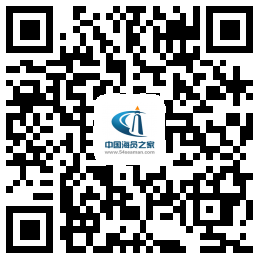案例丨拖轮和船舶合作不畅导致拖轮倾覆
发表于 2017-09-26 15:12
本文来自:Tianjin FSC
事故描述
有一艘2500总吨的化学品船左舷靠岸停泊,并已完成卸货。当时天色很暗,快要涨潮,能见度良好,有4到5级风吹向泊位方向。
一名引航员登轮做离港准备。他建议船长使用带缆艇来协助,在必要时,将该轮的船尾拉离泊位。该带缆艇有13吨系船柱的拉力,抵达了船边。随后,其拖缆穿过并系固住了该轮右舷船尾导缆孔(如图示)。
该引航员打左转舵,向前推进,首侧推向右,将该轮整体驶离泊位,仅留前倒缆仍系在岸上。然后解开前倒缆,船舶向前行驶。引航员命令带缆艇艇长跟着该轮一起前进,然后接近该轮并放开缆绳。艇长接到这两个命令,试图将带缆艇向左转向,然而没有成功。
图示:带缆艇象征性相对运动图
1. 拖轮在化学品船前进前的位置
2. 拖轮在化学品船前进时的位置
3. 拖轮在被缠绕并倾覆时的位置
拖缆一下子负荷过重,导致带缆艇向左侧严重倾斜。随后,艇长试图通过拉驾驶室甲板上悬挂下来的手柄来进行紧急释放拖缆钩。
同时,化学品船船长一收到船员关于带缆艇操作困难的通知,就将螺旋桨螺距调到零。随后,由于拖缆仍系在化学品船上,带缆艇倾覆。虽然该艇水手成功游走,艇长却被困在驾驶室直到一个小时后被发现才获救。
事故教训
1. 拖轮一般会使用绳索将有效牵引点移得靠近船尾。这能防止拖缆绕住拖轮的横梁,从而降低被横向牵引力拉至倾覆的风险。带缆艇的管理公司认识到了倾覆的风险,所以要求在每条拖轮上使用绳索。但是,其错误假设了该带缆艇船员善于使用绳索来最大化其预防效果。
2. 在这一案例里,绳索的长度设定在中间范围,既不够短,不足以移动牵引点以防倾覆,也不够长,一旦拖缆受重,不方便艇长向左转向。
3. 如果在开始拖船前,艇长以针对倾覆风险和预防的培训为基础,全面地评估该工作,将能够更周全地确定合适的绳索长度。
4. 化学品船船长和带缆艇艇长如果在特定操作阶段进行有效且主动的沟通,本就可以降低倾覆风险。而在这一案例里,船长指望艇长自主行动,在有疑惑和困难时主动通知他。如果带缆艇艇长得知该船准备或已经向前行驶,他可能就能在拖缆额外负荷前向左转向。或者,他可以在船行驶前通知船长他可能存在转向困难。必须进行沟通、制定方案并持续交流包括发动机运行在内的信息,这几项是《商船船员安全工作守则》推行的举措,也是大量MAIB关于拖轮操作的安全调查中的一项重要发现。
5. 拖缆钩紧急释放装置没有机械协助,依赖于船员手动操作来释放拖缆。该事故后开展的拖缆钩测试表明,在负荷状态下,稳定地操作释放装置比猛地拉需要大得多的力,且所需力随着钩上的负荷量的增加而成比例的增加。
演习没有将紧急释放纳入,所以船员在可能的紧急情况下缺乏准备,无法采取合理、快速行动。
那么,你做好准备了吗?
MABI报告原文
Isolated Working Leads to Girting
Narrative
A 2,500gt chemical tanker was berthed port side alongside and had completed discharging its cargo. It was dark, near high water, with good visibility and a force 4 to 5 wind blowing onto the berth.
A pilot boarded the tanker in preparation for departure. He advised the master of his intention to use a mooring launch to assist, if necessary, in lifting the tanker’s stern off the berth. The mooring launch, which had a bollard pull of 13t, arrived alongside. Its towline was then passed and secured through the tanker’s starboard quarter fairlead (see figure).
Using port rudder, ahead propulsion and starboard bow thrust, the pilot manoeuvred the tanker bodily off the berth with only the forward spring still secured ashore. The forward spring was then let go and the tanker was manoeuvred ahead. The pilot ordered the launch coxswain to run with the tanker and then to approach the tanker and let go. Both orders were acknowledged by the launch coxswain, who was attempting unsuccessfully to turn the launch to port.
Load had come onto the towline, causing the launch to list heavily to port. The coxswain then attempted to operate the towing hook emergency release by pulling on the handle suspended from the wheelhouse deckhead.
Meanwhile, on being notified by one of his crew that the mooring launch was in difficulty, the tanker’s master brought the propeller pitch to zero. The launch then capsized with the towline remaining attached to the tanker. Although the launch deckhand was able to swim clear, the coxswain remained trapped in the wheelhouse until he was sighted and rescued over an hour later.
The Lessons:
1. A gog rope is commonly used to move the effective towing point closer to a towing vessel’s stern. This prevents the towline from being taken across the towing vessel’s beam, and therefore reduces the danger of girting1. The mooring launch’s management company recognised the danger of girting and, consequently, required a gog rope to be used on every tow. However, it incorrectly assumed that the mooring launch crew were proficient in adjusting the gog rope to maximise its preventive effect.
2. In this case, the gog rope was set at an intermediate length that was neither short enough to move the towing point sufficiently aft to prevent girting nor long enough to facilitate the coxswain’s intended turn to port once load had started to come onto the towline.
3. A thorough assessment of the task prior to commencement, underpinned by appropriate training highlighting the risk of girting and how to prevent it, would have enabled the mooring launch coxswain to make a more informed decision on what the optimum gog rope arrangement should have been.
4. Effective proactive communications between the tanker’s pilot and the mooring launch coxswain at defined stages of the operation would have reduced the risk of girting. In this case, the pilot relied on the coxswain to act autonomously and to inform him when in doubt or difficulty.
Had the launch coxswain been warned that the tanker was about to be manoeuvred ahead or had already started to move ahead, he might have been able to turn the launch to port before additional loading came onto the towline. Alternatively, he could have informed the pilot of any doubt he might have had in his ability to turn the launch before the tanker gathered headway.
The need to establish communications, agree a plan and continually exchange information, including engine movements, is promoted in the Code of Safe Working Practices for Merchant Seafarers and has been a significant finding in a number of MAIB safety investigations concerning towing operations.
5. With no mechanical assistance, the towing hook emergency release relied on the crew to operate the manual pull in order to release the towline.
Tests of the towing hook following the accident demonstrated that, under load conditions, a steady pull required significantly more force to operate the release mechanism than a sharp pulling action, and that the required effort increased in proportion to the loading on the hook.
The emergency release had not been practised as part of a drill, and so the crew lacked preparedness to take appropriate and rapid action in the event of a developing emergency. How prepared are you?
New Word:
“MOORING LAUNCHES”带缆艇
These vessels are widely used in pilot-age operations besides assisting in mooring/unmooring of tankers and the connection/disconnection of hoses, transporting general material and personnel, assisting in the maintenance of single buoy mooring, taking part in offshore maintenance and production support, and in operations and the recovering of survivors from sea. These vessels also play an important role when carrying out standby duties.



 联系我们人工客服
联系我们人工客服



















 :1391995811
:1391995811


评论 (0人参与)